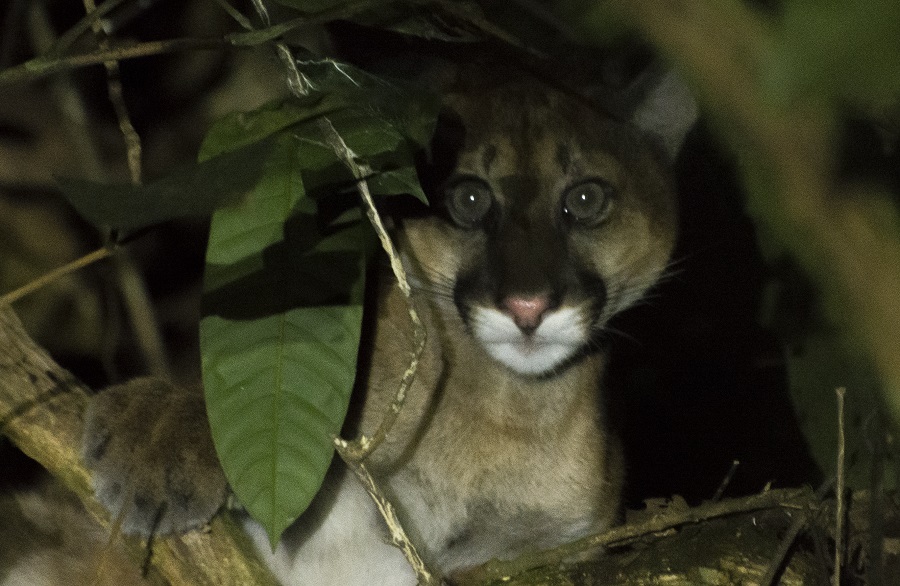Highlight of the week here at the Manu Learning Centre (MLC) was watching a puma saunter across the trail on a night survey.
While out walking the trails, surrounded by the thriving life of the Amazon rainforest, our research team and visitors regularly come across big cat footprints in the sticky mud.
But actually seeing a top predator is a very special experience.

On a night survey this week, suddenly the team saw two, large shining eyes in the middle of their trail. Then the unmistakable outline of a big cat. With their hearts racing, they watched the puma as it watched them. They were in the presence of one of the jungle’s top predators for a few seconds, before it melted into the night.
The puma is powerfully built and extremely agile. They are characterised by a long body with unusually long hindlimbs, thought to be an adaptation to bursts of high-speed running and jumping, used to chase and ambush prey. They are mostly active at dawn and dusk, rarely emerging during the day. They are solitary and elusive, so seeing them in the wild is a real privilege. Filled with adrenaline, the team headed back to camp and you have to wonder what else was watching them from within the darkness.
Here at the MLC we go out on Visual Encounter Surveys (VES) twice a week to monitor the many species that are more active at night. It’s been a successful couple of weeks for mammal sightings during VES, with several up-close sightings of tapirs and red brocket deers.
These experiences are a reminder of the incredible species who share our forest home.
(There was no time for the team to take a photo of the puma and with such a up-close sighting it was the last thing on their minds. The feature image is from a camera trap on the trails here at the MLC by Dr Chris Beirne)


